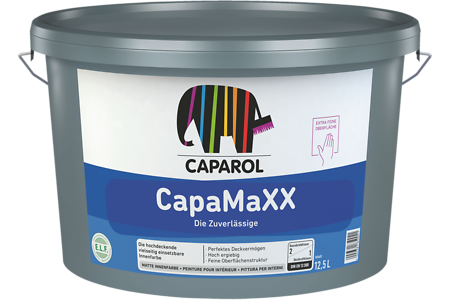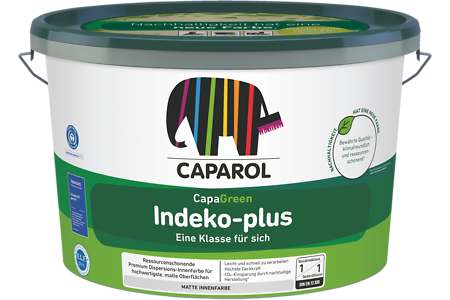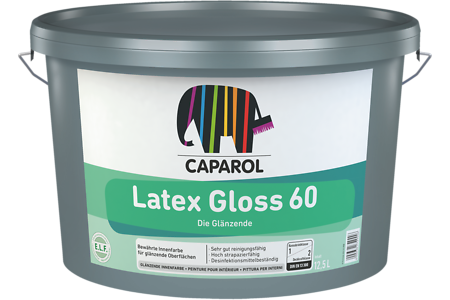Field of Application
By varying the design, type, colour, gloss level and coating technique, highly attractive, valuable and individual wall surfaces can be achieved with Capaver glass fabrics. If there is a desire to change the visual appearance or new usage requirements for surfaces, these can be realised simply, quickly and economically by coating as required.Material Properties
- Homogenous visual appearance of the texture.
- Highly wet-resistant.
- Rot-resistant, dimensionally stable.
- Covers small surface cracks (crack bridging).
Material Base / Vehicle
Capaver® Glasgewebe K are made of purely mineral glass yarns.
Types that can be delivered
| Type | Texture | Weight per m2 | Roll Size | Pattern Repeat |
| 1100 K | fine | approx. 135 g | 50 x approx. 1 m | |
| 1132 K | medium-fine | approx. 155 g | 50 x approx. 1 m | |
| 1142 K | medium-fine | approx. 110 g | 50 x approx. 1 m | |
| 1152 K | fine | approx. 145 g | 50 x approx. 1 m | |
| 2120 K | medium stripe | approx. 180 g | 25 x approx. 1 m | |
| 2165 K | herringbone, medium | approx. 195 g | 25 x approx. 1 m | >l1.6 cm |
| 2170 K | coarse | approx. 180 g | 25 x approx. 1 m | |
| 2180 K | double chain, coarse | approx. 200 g | 25 x approx. 1 m | |
| 2410 K | medium | approx. 195 g | 25 x approx. 1 m | |
| 2440 K | diagonal, medium | approx. 175 g | 25 x approx. 1 m | >l 1.5 cm |
| 2460 K | rhomb, medium | approx. 190 g | 25 x approx. 1 m | >l 8.5 cm |
| 3185 K | double-chain, extra coarse | approx. 240 g | 25 x approx. 1 m |
Packaging/Package Size
See table above. Selectable unit: One carton per roll.
Storage
Store Capaver wall coverings in a dry place.Supplementary Product
- Capaver CapaColl GK
- Capaver CapaColl VK
- Interior paints of the Caparol product range
Note
Capaver® Glasgewebe K are made of glass fibres with a diameter > 5 µm and are therefore not respirable. Despite the highest level of integration of the glass particles, they can be released to a very limited extent when the fabric is cut to size and cause itching in people with sensitive skin, which subsides once the bonding work is complete. In principle, no more glass fibres are released after coating. We recommend that people who are sensitive to glass fibres take suitable protective measures during the wallpapering work.
Structural cracks cannot be repaired wit with Capaver® Glasgewebe K.
Suitability according to Technical Information No. 606 Definition of Application Areas
| Interior 1 | Interior 2 | Interior 3 | Exterior 1 | Exterior 2 |
| + | + | ○ | – | – |
| (–) inapplicable / (○) of limited suitability / (+) unsuitable | ||||
Substrates
Interior surfaces made of mineral plasters of mortar group DIN EN 998-1 class CS II - CS IV, gypsum plasters according to DIN EN 13279-1, gypsum plasterboard, gypsum plasterboards, concrete surfaces.Substrate Preparation
The substrate must always be solid, dry, sound/stable, clean, even and free from all substances that may prevent good adhesion. Follow Technical Information No. 650.In Germany: Follow VOB, part C, DIN 18366, section 3.
Lower temperature limit for application and drying: +5 °C (product, substrate and ambient air).
In the case of fine to medium mesh structures on surfaces with a strong grazing light effect or special lighting situations, substrate preparation may be subject to increased requirements. Please refer to the relevant information sheets of the Federal Association of the Gypsum Industry (BVG).
Note Q2/Q3 levelling / thin layers of gypsum < 0.5 mm
When using gypsum-based, hydraulically setting levelling compounds in quality level Q2/Q3, a transparent, water-based primer is recommended. Please refer to the Maler&Lackierer Merkblatt Nr. 2 -9/2020 "Haftfestigkeitsstörungen von Beschichtungen auf verspachtelten Gips(karton)platten" des Bundesverbandes Farbe, Gestaltung, Bautenschutz und des Bundesausschusses Farbe und Sachwertschutz.
As an alternative to gypsum-based Q3 levelling, levelling with pasty levelling compounds has proven itself.
Method of Application
Roller Application of Adhesive:
- Apply Capacoll GK evenly with a roller (18 mm piles), but only for 1-2 fabric lengths, depending on the temperature on site.
- Note: Take particular care to ensure that the adhesive is distributed as evenly as possible, as accumulations of adhesive under the fabric can have a negative effect on the final surface appearance.
Spray Application of Adhesive:
- CapaColl VK can be applied directly to the wall using airless equipment.
- CapaColl GK should be diluted with 20 % water depending on the local conditions.
- When spraying, pay particular attention to the recommended material consumption and even distribution so that not too much adhesive is applied to the substrate.
Advice: Detailed information concerning the spray application of CapaColl are given within our German manual "#843604 Handbuch der Spritztechnologie".
Adhesive application with the wallpapering machine:
- CapaColl VK is ideally suited for wallpapering machines. When using CapaColl GK, it is necessary to dilute the standard product with 20 % water. The fabric structures 1100, 1142 and 1152 cannot be applied with a wallpapering machine.
Bedding/Bonding of Glass Fabrics:
- The reverse side of the roll is marked and has to be bonded to the wall. To avoid differences of appearance in texture/pattern, always place the fabrics running in one direction and not laterally reversed.
- Capaver Glass Fabrics are to be bonded with butt joints.
- Note: Provide for narrow butt joints, but the forming of bulges must be avoided to achieve a proper visual appearance.
- Important: The horizontal run of yarns (weft yarns) within joining lengths should match at eye level, avoiding an unintentional "zipper" effect.
- Some fabric types have a pattern repeat, which must be considered for bonding.
- Press the bonded lengths void-free with sufficient pressure to the full surface using wallpaper scraper or pressure roller. Fix the edges and cut of the excess length with a wallpaper scraper.
- Hint: For bonding Capaver glass fabrics on vertical external corners, the length must pass around it for minimum 10 cm. For non-vertical corners, the fabrics must be cut at the corner.
- For bonding stiff glass fibres and vleeces on external corners, sand the fibres on edges with a wet sanding pad type P320 (but only a little and very carefully; do not sand through the material) to induce a better pliability and press on.
Surface Coating System
Intermediate Coat:The intermediate coat forms the basis for a perfect top coat. Once the wall covering has dried, the intermediate coat is applied to match the top coat.
Finishing Coats:
The selection of a suitable top coat depends on the required degree of stress and gloss. Coatings should always be applied wet-on-wet. This also applies to trimming areas.
Drying/Drying Time
Allow bonded glass fabrics to dry thoroughly before any further coating.Note
On principle the marked interior side of a roll has to be bonded to the wall. The outer side of the roll is the visible face. To avoid differences of appearance in texture/pattern, always place the fabrics running in one direction and not laterally inverted.Capaver wall coverings are thoroughly inspected by the manufacturer. In exceptional cases isolated production related weaving faults may occur. These faults are marked at the trimmed edges and correspondingly compensated. They do not entitle to any objection. While cutting and bonding the fabric lengths, ascertain whether there are no weaving faults. In case of complaint the label with the batch and product numbers (see original carton) must be kept ready. Claims based on material faults cannot be objected after the application of more than 10 fabric lengths.
German Certificates
- Flame-retardancy according to German standard DIN 4102, B1
- Non-combustibility according to German standard DIN 4102, A2
- Decontaminatibility in combination with Disbopox 447 E.MI Wasserepoxid
All test certificates and expertises can be downloaded from www.caparol.de in the download area of the respective product.
Disposal
Capaver glass fabrics and nonwovens can be disposed of as construction site waste.Technical Assistance
All substrates encountered in practice and their technical processing cannot be dealt with in this publication. If substrates are to be treated that are not listed in this technical information, it is necessary to consult us or our sales representatives. We will provide you with detailed and object-related advice.Customer Service Centre
Tel.: +49 6154 71-71710Fax: +49 6154 71-71711
e-mail: kundenservicecenter@caparol.de
International Distribution: Please see www.caparol.com












